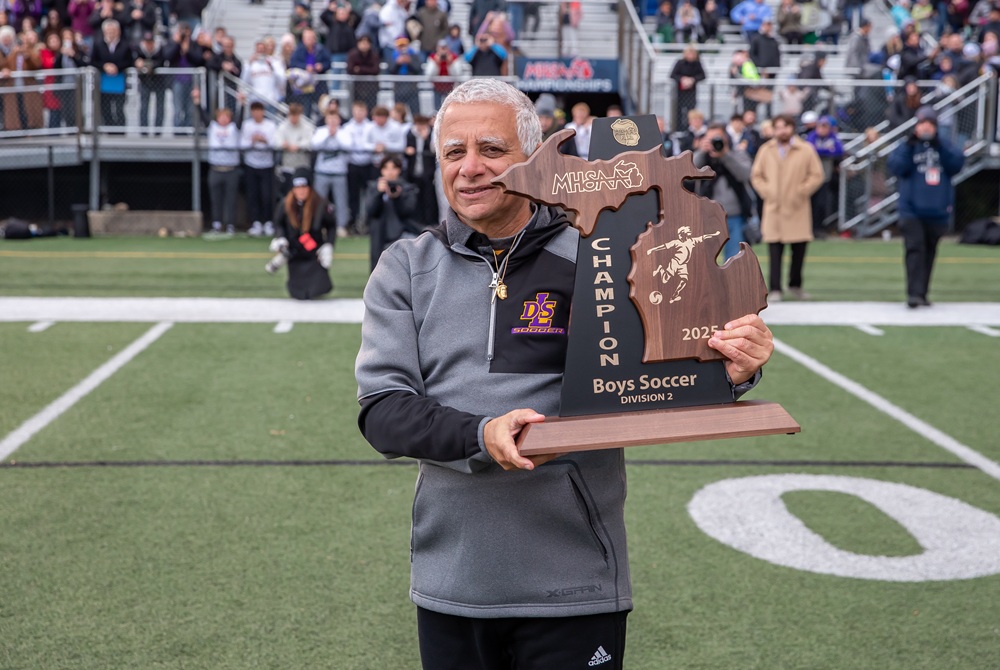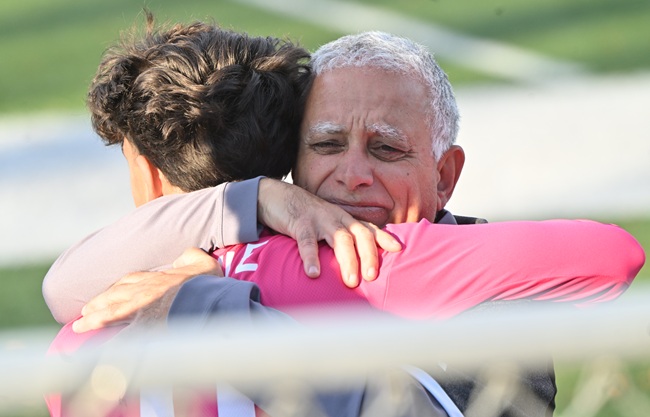
Program Priorities
January 10, 2014
Many school districts face more requests from their constituents for sports programs than they have the resources to accommodate, so they are forced to make very difficult decisions. For three decades, when I’ve been consulted, I have offered and stood by this advice.
First, I advance the premise that if the activity is educational, there is just as much potential for the education to occur at the junior high/middle school and subvarsity levels as at the varsity level. Just as we would not discriminate against one race or gender, we should not disadvantage one age or ability level. In fact, with a little less pressure to win, it is likely to see more education at subvarsity levels and more reason to sponsor them.
Second, I advocate the position that schools should avoid sponsorship of any activity for which a qualified head coach cannot be secured. Qualified personnel are, in order of priority:
-
a teacher within the building who has current CPR certification and completed CAP.
-
a teacher within the district who has current CPR certification and completed CAP.
-
a teacher in another district who has current CPR certification and completed CAP.
-
a certified teacher from the community who has current CPR certification and completed CAP.
-
a non-certified person who has current CPR certification and completed CAP.
I urge schools not to descend lower than this for program leadership. Coaches are the delivery system of the education in educational athletics; they are the critical link in the educational process. More problems occur than are worth the effort if the program is in the hands of an unqualified coach.
Next, I urge that schools rank sports on the basis of cost per participant, and give higher priority to sports that spread funds over the greatest number of participants.
Next, I urge that schools place lowest in priority the sports that cannot be operated on school facilities and create transportation, supervision and liability issues, and give higher priority to those conducted at or very near the school.
Next, I urge that schools place lowest in priority the sports which are most readily available in the community, without school involvement. If resources are precious, then duplicating school programs should be a low priority; doing what the community can’t do or doesn’t do should be given a much higher priority.
While I’m a fan of school sports, I recognize that an athletic program has as much potential to do harm as to do good. Programs without qualified coaches that are conducted for small numbers of students at remote venues and without comprehensive school oversight and support may create more problems for schools than the good they do for students.
Bare bones budgeting will require brutally honest assessments based on priorities like these.

Pilots' Record-Setting Coach Always Eager to Play Role in Helping Students Soar
By
Keith Dunlap
Special for MHSAA.com
November 13, 2025
As if they were fans standing outside an arena’s exit waiting for a famous rock star or professional athlete to come out, Warren De La Salle Collegiate students congregated outside a gate at Grand Ledge High School with bated breath.
 Instead of a rock star or athlete, the students had phones up waiting for Thaier Mukhtar, and let him know just how much he was loved.
Instead of a rock star or athlete, the students had phones up waiting for Thaier Mukhtar, and let him know just how much he was loved.
“Mr. Mukhtar! Mr. Mukhtar!” the students chanted while mobbing him with praise.
Given what he has meant to the school and Michigan high school soccer for nearly four decades, it’s no wonder why the students waited him out.
Mukhtar had just helped lead De La Salle to its seventh Finals championship with a 2-0 win over Hudsonville Unity Christian, and Mukhtar said he was now in elite company with a famous NFL quarterback.
“Everyone was making fun of me because Tom Brady had one more ring than me,” Mukhtar quipped. “Now he doesn’t.”
The Division 2 title was the second straight for De La Salle and finished off a recent stretch full of milestones.
Two seasons ago, Mukhtar became the all-time winningest boys soccer coach in state history when he surpassed Nick Archer of East Lansing by earning his 661st victory.
This year, Mukhtar reached the 600-win mark coaching for De La Salle. That achievement didn’t come with much fanfare, but that was by design and true to form.
“He didn’t celebrate a lot because it’s more about the team,” Pilots senior James Spicuzzi said. “We got him a signed ball, but that was really it. It’s more about the team for him than it is about himself.”
Mukhtar has tried to make that his emphasis since becoming the head coach of De La Salle in 1983 at the age of 23.
The Pilots won their first championship, in Class A, in 1990, and then consecutive titles in 1992 and 1993.
 After sharing the 2000 Division 1 title with Bloomfield Hills Brother Rice and then defeating Brother Rice to win the championship in 2005, De La Salle went on a title drought.
After sharing the 2000 Division 1 title with Bloomfield Hills Brother Rice and then defeating Brother Rice to win the championship in 2005, De La Salle went on a title drought.
Mukhtar actually left his coaching post at De La Salle in 2011 and coached boys and girls soccer at Fraser from 2012-17 before returning as Pilots coach in 2018.
A social studies teacher at De La Salle for 30 years – a job he still holds – Mukhtar admits his coaching style can rub some the wrong way.
“I’m a demanding coach,” he said. “I’m a perfectionist. I call out every little mistake, and I make sure we work on those mistakes. I don’t care if we win 4-1 or 4-0, but are making mistakes. You’re not going to make those mistakes at the end of the year if you don’t want to send your team home.
“I have people – whether it’s parents or players – look at me like, ‘That guy is crazy. They just won the game.’ It ain’t about winning the damn game. It’s about getting here (to the state final) and not making those mistakes. Not committing the foul. Not being out of position. Not communicating in the back. Different things we harp on over and over again.”
Junior Andrew Corder, who led De La Salle with 38 goals this year, said it’s tough love that players have learned to embrace.
“It’s been kind of hard at times, but he just wants the best for us,” he said. “It’s all worth it.”
Mukhtar said he often thinks about retirement, but then points to something his son told him as a reason to keep running it back.
“Every year it’s a battle with me and my administration and, ‘Am I returning? Am I not returning?’ I say to take it year by year,” Mukhtar said. “My CEO at De La Salle made me guarantee that I give him two years (notice) at least. … I give two and then I always say, ‘Why am I doing this?’ My knee is killing me. But when my son says to me, ‘Dad, the fact that you get nervous and the fact you get excited means that you’re not ready (to retire).’ He said it perfectly, and he’s 100 percent right.”
Which is why Mukhtar is likely to continue coaching for the foreseeable future, and why more student celebrations should be in store.
“I’m still teaching at school when I don’t have to, and I’m still coaching when honestly I’ve done everything I’ve needed to do in my life,” Mukhtar said. “I’m like three wins away from 900 career victories coaching boys and girls. I’m still doing all these things because I feel like I can play a role in their life. It’s not just soccer. I want you to be able to believe in yourself and believe that you can accomplish whatever you work hard for. I teach my students the same thing.”
 Keith Dunlap has served in Detroit-area sports media for more than two decades, including as a sportswriter at the Oakland Press from 2001-16 primarily covering high school sports but also college and professional teams. His bylines also have appeared in USA Today, the Washington Post, the Detroit Free Press, the Houston Chronicle and the Boston Globe. He served as the administrator for the Oakland Activities Association’s website from 2017-2020. Contact him at [email protected] with story ideas for Oakland, Macomb and Wayne counties.
Keith Dunlap has served in Detroit-area sports media for more than two decades, including as a sportswriter at the Oakland Press from 2001-16 primarily covering high school sports but also college and professional teams. His bylines also have appeared in USA Today, the Washington Post, the Detroit Free Press, the Houston Chronicle and the Boston Globe. He served as the administrator for the Oakland Activities Association’s website from 2017-2020. Contact him at [email protected] with story ideas for Oakland, Macomb and Wayne counties.
PHOTOS (Top) De La Salle boys soccer coach Thaier Mukhtar holds up his team’s championship trophy after the Pilots clinched the Division 2 title Nov. 1 at Grand Ledge High School. (Middle) Mukhtar embraces keeper Giovanni Vitale after his team’s 2024 championship win.

